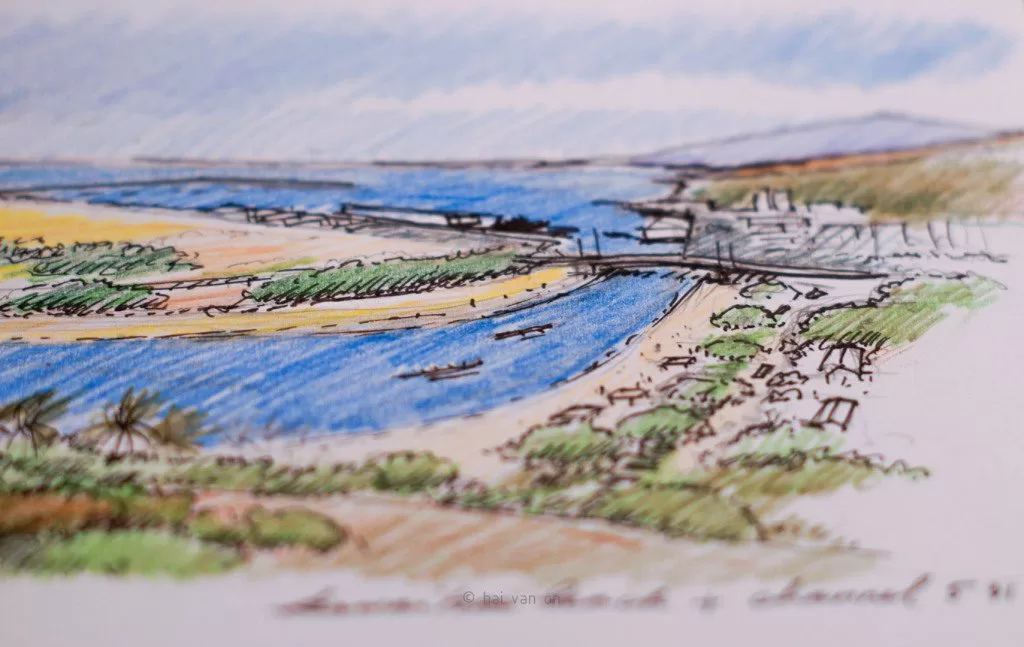
To answer this question, we have started a process and will update it as it progresses. We contacted a Hawaii Department of Aquatic Resource, DAR staff member. She mentioned NOAA and ESA, the Endangered Species Act in her email.
Update 2024.10.09
Irene K. Kelly
Sea Turtle Recovery Coordinator
NOAA Fisheries – Pacific Islands Region
Irene responded, ” We are aware that hawksbills like to live in harbors statewide.Unfortuately this brings them closer to human activities, fishing and boating, which puts them at risk of injury or otherwise. As a matter of human safety we do not deploy stranding program staff to attempt captures of animals in the water. That said, if there is an animal that you have very recently observed with gear and is predictable in its location/behavior we could discuss the potential for an in-water capture with DAR and our Kona HPU associates,“
“With regards to critical habitat, that is a big regulatory/administrative process that we are not currently involved in for hawksbill turtles. However, it is a bit of a misnomer as CH only applies to federal activities and would do notthing about restricting fishing or boating, or public use of an area. Sea turtle habitat per se is already protected given the presence of sea turtles in that habitat. But again, the concept of “protection” is also nuanced. Any proposed development of the harbor would most likely include an ESA section 7 consultation. I will follow up with our S7 team to see if they have received or are aware of any proposed construction. However, I would say its not the habitat that needs protection in this case, but that resource users (eg., fishermen and boaters) could use some awareness/education of their potential impacts to turtles in/near the harbor. I’ll follow up with the DAR team to discuss a strategy/options.”
“If you see an animal in distress or injured (with gear etc), I encourage you to call and report it. That way we can discuss any potential action in real time. Our state-wide, menu based marine wildlife hotline is 888-256-9840. Again, our response programs typically only respond to animals that have stranded on land. But given the habitat (harbor) and species we may pursue other options, but notification via the hotline in real time is key. “
https://www.fisheries.noaa.gov/species/hawksbill-turtle
“NOAA Fisheries and the U.S. Fish and Wildlife Service share responsibility for implementing the Endangered Species Act. We are responsible for most marine species, including whales, seals, sharks, and coral.” More
“Designating Critical Habitats
One of the main goals of the ESA is to conserve the areas or habitat features that threatened and endangered species depend on for survival and recovery. Examples of these critical habitats include nursing, pupping, or breeding sites or foraging areas.
We are responsible for determining whether there are areas that meet the definition of critical habitat for listed marine and anadromous species and designating these areas based on the best available scientific data.“
The Kawaihae Harbor should qualify as a crucial habitat, including pupping or foraging areas. It meets those two criteria with juvenile hawksbill residents aged 1-5 and sponge-enriched underwater structures.
According to NOAA fisheries source:
“Where They Live
Hawksbill turtles use a variety of habitats during different stages of their life cycle, but largely inhabit nearshore foraging grounds, especially healthy coral reef habitats. In the Eastern Pacific, large hawksbill populations have been found in mangrove estuaries. Upon leaving their nesting beaches, most hawksbill hatchlings enter pelagic (open sea) habitat, where they take shelter in floating algal mats and drift lines of flotsam and jetsam for approximately 1 to 5 years. Eventually, juveniles migrate to shallower coastal feeding grounds, including their preferred coral reef habitats, where they mature to adulthood and spend the remainder of their lives. The ledges and caves of coral reefs provide shelter for resting hawksbills during the day and at night. Hawksbills are also found around rock formations, high energy shoals (sand bars in shallow water), and estuaries that provide good habitat for sponge growth.
Hawksbills can be found living in nearshore habitats in all of the world’s major oceans. The occurrence of hawksbills across many countries makes it critical for citizens and governments to work together for the protection and recovery of the species.”
This harbor is not included as a place where they live. Yet it is an “estuary that provides good habitat for sponge growth.” Other harbors may qualify as Hawksbill sea turtles’ habitat if NOAA designates” these areas based on the best available scientific data.”
NOAA has known that hawksbills live in harbors statewide. They need to learn about the Hawksbills in Kawaihae Harbor.
Now that we have determined that NOAA is responsible for implementing the ESA, when and what will happen to help our resident Hawksbill with a giant hook on its left front flipper?

Would be great if you can get the feds involved. Harbor is such a precious place.
Yes, Peter. It is hard to understand all the little pieces that need to work to achieve something important, like saving something wild we love. The knowledge that wild things live in our midst is comforting.